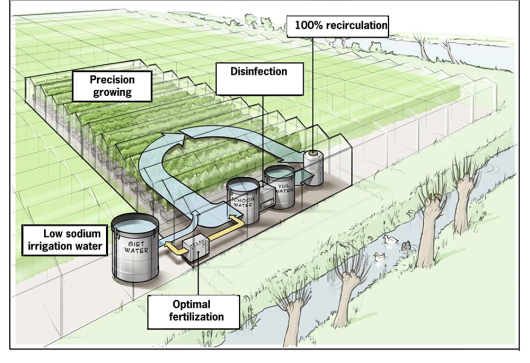Wageningen, the Netherlands
August 28, 2015
Regulations to reduce the emission of nutrients and pesticides force the horticultural industry to adopt a new approach to water management. Is a zero-emission greenhouse feasible?
Wageningen UR Greenhouse Horticulture is currently testing the zero emission greenhouse. In this zero emission greenhouse all drain water is re-used.

In the reference greenhouse occasional discharge takes place in accordance with current practice and the emission standards for nitrogen for 2015. The discharged water is also treated for removal of pesticides.
In the Innovation and Demonstration Centre Water a concept for a zero emission greenhouse is tested by Wageningen UR Greenhouse Horticulture, together with Grodan, Groen Agro Control, Agrozone, Infatechniek, Fiber Filtration, Elektravon-Haket, Plant Nursery Van der Lugt and Enza Zaden (subsided by Topsector T&U, STOWA, EFRO, Province of South Holland).
The project started successfully with a zero emission cucumber growing in July-November 2014. Since December we are growing sweet pepper. From start on all water of the zero emission greenhouse is fully recycled, whereas in the reference greenhouse all drain water was discharged during first 8 weeks, and also in spring discharge took place. No recirculating problems were encountered up to now. Moreover, there are no differences in production or quality found between the zero emission and the reference greenhouse.